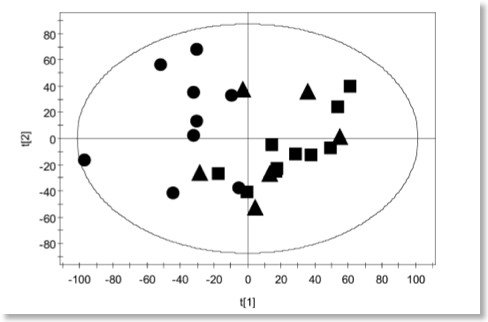Metabolomics in canine hepatology

Whitfield, P.D., Noble, P-J, Major, H., Beynon, R.J., Burrow, R., Freeman, A.L.& German, A. (2006) Metabolomics as a diagnostic tool for hepatology: validation in a naturally occurring canine model. Metabolomics DOI: 10.1007/s11306-005-0001-3 [PDF]
Human hepatopathies are a diagnostic challenge, with many distinct diseases having similar clinical signs and laboratory findings. Naturally occurring canine hepatic disease provides an excellent model for human diseases and similar diagnostic dilemmas exist; differentiating canine congenital portosystemic vascular anomalies (PVA) from acquired hepatopathies is difficult and traditionally requires invasive diagnostic procedures. The emerging post-genomic science of metabolomics is concerned with detecting global changes of populations of endogenous low molecular weight metabolites in biological samples and offers the possibility of identifying surrogate profiles of disease. Metabolomics couples sensitive metabolite analysis with sophisticated pattern recognition techniques. In this study, a metabolomic strategy has been employed to assess metabolite changes in the plasma of dogs with congenital PVA and acquired hepatic disease. Plasma samples were collected from 25 dogs, comprising 9 dogs with congenital PVA, 6 with acquired hepatopathy and 10 with non-hepatic disorders. Low molecular weight metabolites were analyzed by liquid chromatography-mass spectrometry (LC-MS). Following identification of metabolites, multivariate data analysis was used to compare profiles amongst groups. The analysis demonstrated significant disturbances in the plasma bile acid and phospholipid profiles of dogs with portovascular anomalies. In contrast to traditional laboratory parameters, the metabolomic strategy was able to produce a clear segregation between all three study groups. In conclusion, this study demonstrates the potential of metabolomics as a diagnostic tool for naturally occurring hepatic disease. With further validation, this approach will improve diagnostic capabilities, provide an insight into pathogenetic mechanisms, and ultimately inform therapeutic decision making in clinical hepatology.